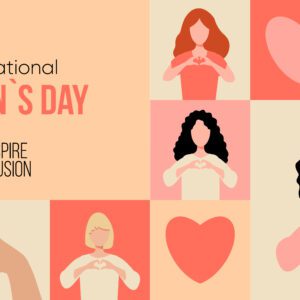CQC Letter Of Intent: Panic Stations Or A Last Chance To Put Things Right?
Key Contact: Jon Lawley
Author: Jenny Wilde
It’s a classic scenario – a client calls at 5 p.m., frantic with worry having received an urgent email from the CQC. Attached to the email is correspondence marked “letter of intent” which refers to urgent enforcement action.
It isn’t always clear what this means so it’s important to explain the situation to the client and devise an urgent strategy.
A letter of intent is usually issued to a provider shortly after an inspection or review. The letter indicates that the CQC has significant concerns about a service based on the information it has gathered during its latest review. The letter will inform the provider that the concern was so significant that it has resulted in the CQC considering whether to take urgent enforcement action in line with Section 31 of the Health and Social Act 2008 (i.e. where it believes there is a “risk of harm”). This legislation allows the CQC to take steps that have an instantaneous impact on a provider’s registration and can result in the variation or removal of conditions on a registration or even the suspension of the registration.
One of the most common conditions that the CQC can add to a registration under this section is a restriction on admissions to a service – meaning that no new service users will be allowed to start a placement without the approval of the CQC. This example obviously has far-reaching commercial consequences for providers.
It is important for providers to understand that urgent decisions made under Section 31 can only be appealed through a formal tribunal – a costly and significant court process.
Occasionally the CQC takes action under Section 31 without any warning and will simply issue a Notice of Decision to the provider, however, a letter of intent gives providers one last ditch attempt to persuade the CQC that this damaging and urgent action is not necessary. On this basis, a well-considered and detailed response to the letter of intent is absolutely crucial.
How to respond to a letter of intent
The letter of intent is letting a provider know that the CQC is one step away from urgent enforcement action. The “intention” of the CQC is to execute the action unless the provider can submit to them some reassurance that it is not necessary.
The letter of intent will clearly set out a list of concerns that have got the CQC to this point.
The letter will request that the provider addresses each concern and create and submit an action plan detailing how each one of those issues will be resolved. As a risk-based regulator, the CQC will want to see that the provider has taken steps to eliminate immediate risk with respect to each point and has in place a plan to ensure more sustained improvement and compliance.
If the provider can persuade the CQC that the risk of harm has been addressed, then the regulator will be less inclined to take urgent action.
The essential part of the response to a letter of intent is the action plan itself. Each allegation should be set out in turn with clear explanations of how the risk has been eliminated and what action is going to be taken in the future to ensure the matter does not recur. It is sensible to clarify a senior person within the organisation that will take ownership of the remedial action and where more long-term work is required to resolve the matter, the expected date of completion. Remember, the CQC wants to see proactivity, responsibility, and responsiveness.
How long will I have to respond to a letter before action?
The reason that letters of intent can be so alarming to providers is because of the extremely short deadlines providers have to respond.
As noted above, the letter itself is likely to arrive soon after an inspection, usually between 4 – 6 p.m. In my experience, it is very common for the CQC to require an urgent response by lunchtime the following day. This is where the panic sets in. Providers feel overwhelmed and under immense pressure to respond but the key is to split the task into two parts and be focused.
Action plans go a long way to providing reassurance (after all, the CQC wants to see a provider immediately taking steps towards improvement), but it also wants to hear how seriously it is taking the matter. As a pre-cursor to formal enforcement action, it is advisable to seek legal advice on the best approach and the instructing solicitor can draft a compelling covering letter to set out the position and provide assurance to the CQC that the organisation is fully engaged. The solicitor can also provide an independent opinion on whether the action plan is robust enough to persuade the CQC that action is not necessary.
Why is it important to respond to the letter before action?
As mentioned above, not all providers receive a letter of intent before the CQC moves to Section 31 action. It should be regarded as a final opportunity to avoid significant enforcement action and that opportunity should be grasped with both hands. The only other way to counter Section 31 action once it is issued, is through the First Tier (Care Standards) Tribunal. These are formal legal proceedings in court, and this can divert much-needed financial and time resource away from services.
Transparency, reflection, and proactivity can go a long way to repairing relationships with the CQC and avoiding a very serious and damaging outcome.
Of course, there will be occasions on which the provider does not agree with the CQC’s assertions in the letter of intent. In those situations, the provider’s position should be made very clear, and matters not simply be accepted to avoid further action. Acceptance of matters that are not accurate will only lead to a false impression of a service being set on the record and this could have a negative impact later down the line.
The CQC’s new single assessment framework is going to lead to more regular reviews by the CQC and this could result in more letters of intent being issued if there is a perception of risk by the person conducting the relevant review. Only time will tell what impact the new system will have.
If you need more information on the topics discussed, please reach out to the Corporate Healthcare Team.






